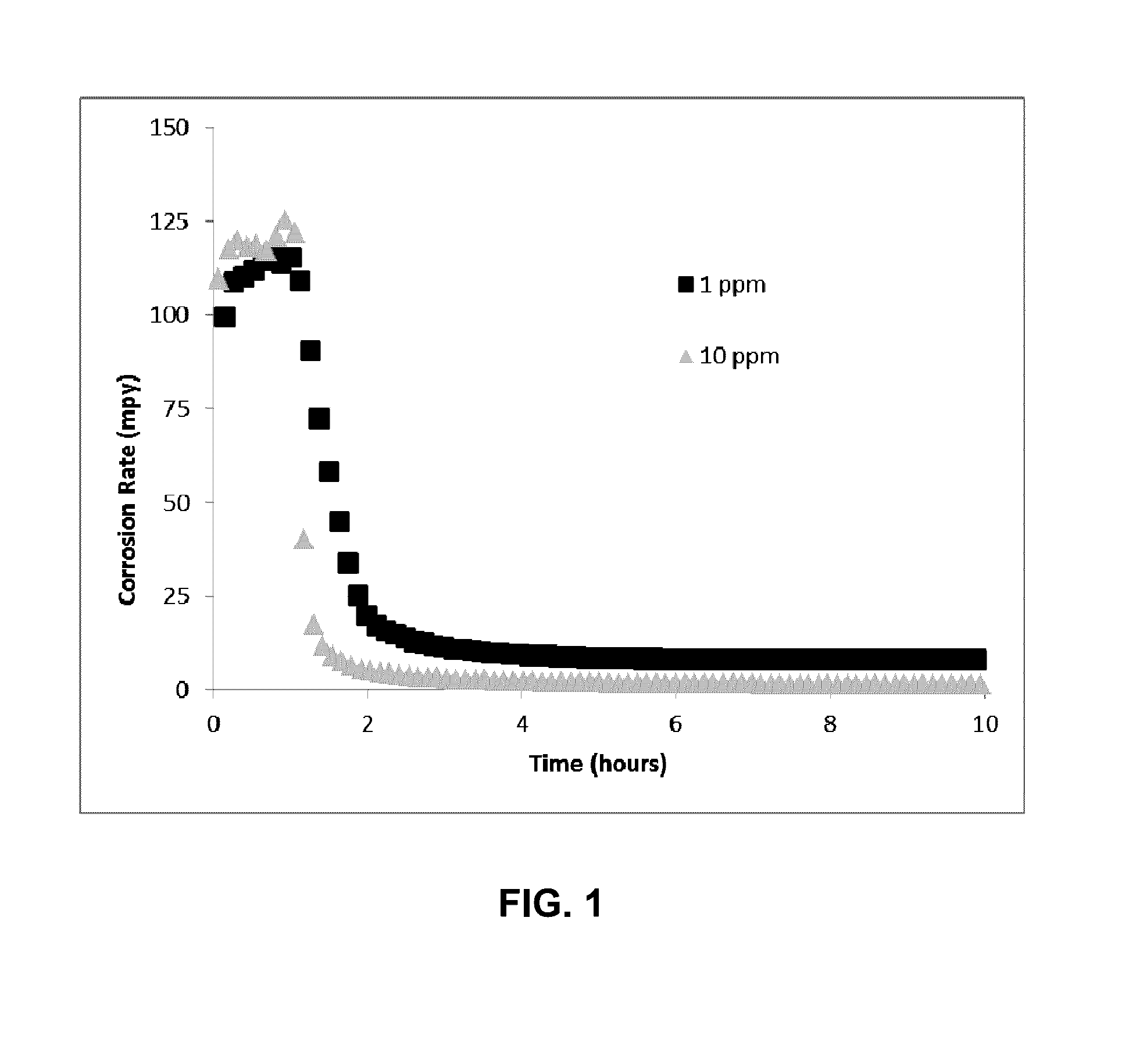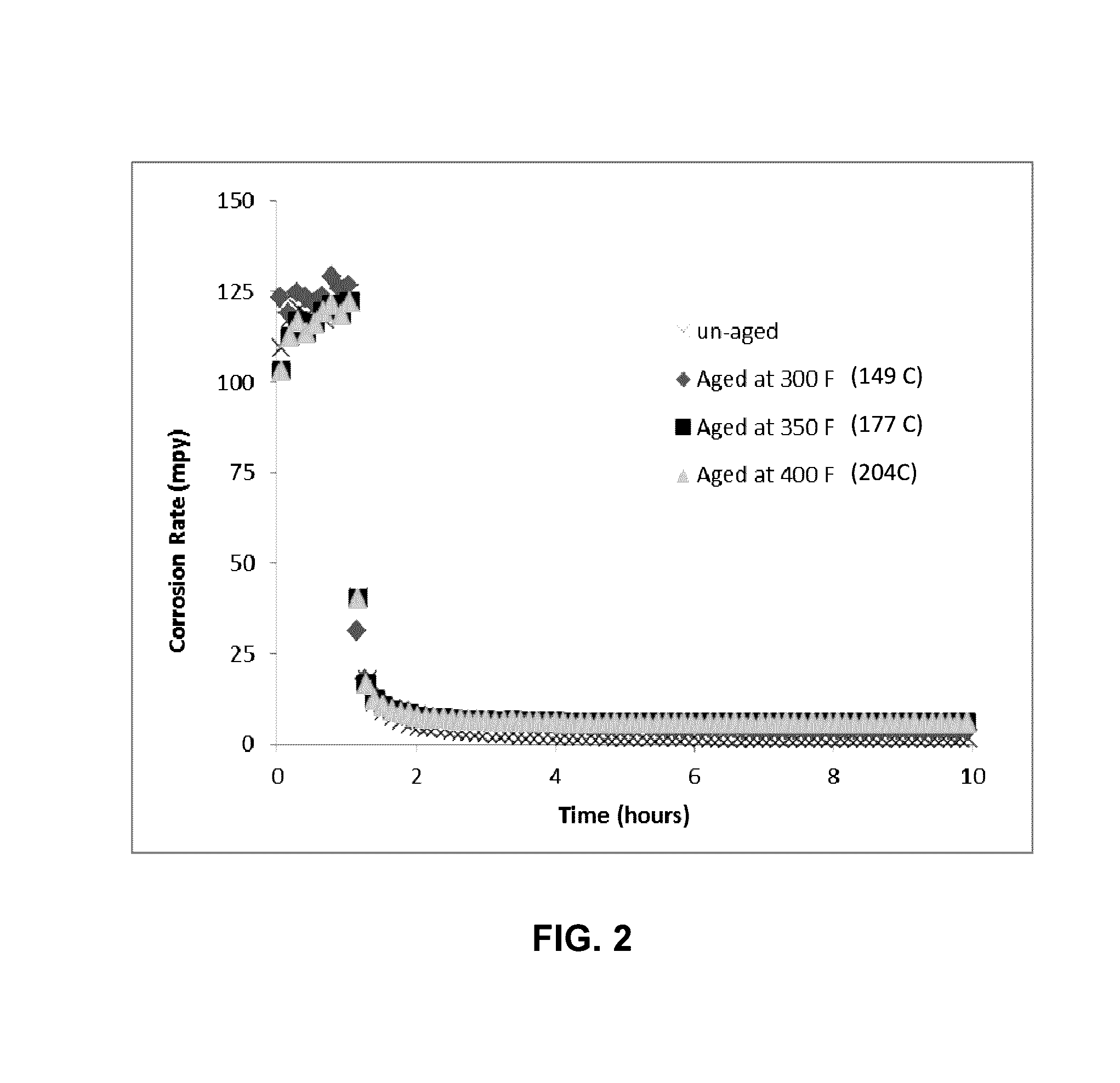Decreasing corrosion on metal surfaces
a metal surface and corrosion technology, applied in the direction of well accessories, drilling compositions, chemistry apparatus and processes, etc., can solve the problems of undesirable, metal surface corrosion, ferrous and non-ferrous and respective alloys, etc., to and reduce the corrosion of metal surfaces.
- Summary
- Abstract
- Description
- Claims
- Application Information
AI Technical Summary
Benefits of technology
Problems solved by technology
Method used
Image
Examples
example 1
[0034]In FIG. 1, the corrosion inhibition performance of SH—CH2—[CH2—O—CH2]2—CH2—SH, when z is 2 in Formula A1, at the dosage of 1 ppmv and 10 ppmv based on total fluid amount is shown as a function of time. The total fluid consists of 100 ml ISOPAR™ M hydrocarbon of 900 ml of brine solution, which has about 94 g / L NaCl, 4.1 g / L CaCl2 and 1.9 g / L MgCl2. CO2 was constantly purging through the fluid prior and during the corrosion testing at about 100 mL / min at 1 atm pressure. The temperature was maintained at 180° F. (82 ° C.). The corrosion rate decreased from about 125 mpy to less than 10 mpy, at 1 ppmv dosage and less than 2 mpy, at 10 ppmv dosage after the chemical was injected at hour one.
example 2
[0035]SH—CH2—[CH2—O—CH2]2—CH2—SH was thermally aged at different temperatures, for 7 days, prior to injected into the corrosion environment. In FIG. 2, the corrosion inhibition performance of un-aged and aged SH—CH2—[CH2—O—CH2]2—CH2—SH were shown. The corrosion testing was conducted as described in Example 1. At 10 ppmv dosage, the chemical's inhibition performance shown no difference when the chemical was exposed to thermal aging at 300° F. (149° C.), 350° F. (177° C.) and 400° F. (204° C.). This indicates this chemical has a thermal stability limit of 400° F., for the exposure time of 7 days.
[0036]In the foregoing specification, the invention has been described with reference to specific embodiments thereof, and has been described as effective in providing methods for decreasing corrosion of a metal surface in a high temperature environment. However, it will be evident that various modifications and changes can be made thereto without departing from the broader spirit or scope of ...
PUM
| Property | Measurement | Unit |
|---|---|---|
| temperature | aaaaa | aaaaa |
| temperature | aaaaa | aaaaa |
| temperature | aaaaa | aaaaa |
Abstract
Description
Claims
Application Information
 Login to View More
Login to View More - R&D
- Intellectual Property
- Life Sciences
- Materials
- Tech Scout
- Unparalleled Data Quality
- Higher Quality Content
- 60% Fewer Hallucinations
Browse by: Latest US Patents, China's latest patents, Technical Efficacy Thesaurus, Application Domain, Technology Topic, Popular Technical Reports.
© 2025 PatSnap. All rights reserved.Legal|Privacy policy|Modern Slavery Act Transparency Statement|Sitemap|About US| Contact US: help@patsnap.com



